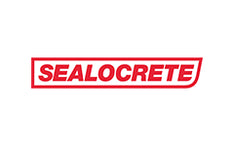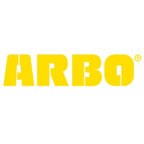Strength and Durability with Mapewall GPR: A Complete Guide for Your Restoration Needs
When it comes to strengthening masonry structures and ensuring long-term durability, Mapewall GPR is the perfect solution. This cement-based, fibre-reinforced mortar is designed for the restoration of old buildings and damp environments, providing a powerful combination of breathability and structural reinforcement. Paired with Mapenet 150, a fiberglass mesh that offers additional tensile strength, and finished with either Silancolor Tonachino or Silancolor Paint, this system provides a comprehensive solution for protecting masonry structures from the elements.
Here’s a detailed guide on how to use these products for optimal results.
Step 1: Surface Preparation
Before applying Mapewall GPR, it's crucial to prepare the surface properly:
- Remove any loose or deteriorated material from the masonry.
- Clean the surface thoroughly to eliminate dust, dirt, and efflorescence.
- Ensure that the substrate is sound and slightly damp but not waterlogged.
Step 2: Applying Mapewall GPR
Once the surface is prepared:
- Mix Mapewall GPRaccording to the product specifications. The mix should be smooth and free of lumps.
- Apply the first layer using a trowel, ensuring a uniform thickness of approximately 5-10 mm.
- While the first layer is still fresh, embed Mapenet 150 (fibreglass mesh) into the mortar. Start from the top and work your way down, ensuring the mesh overlaps at least 10 cm between sheets to avoid weak points.
- Gently press the mesh into the mortar until it is fully embedded, then apply a second layer of Mapewall GPRover the top to fully cover the mesh. The total thickness of the application should range between 15-20 mm depending on structural needs.
Float to achieve a flat smooth finish, and with the use of a sponge float smooth out any final imperfections. The use of a sponge float will also provide a key for the chosen finish:
Step 3: Curing Time
Allow the applied Mapewall GPR to cure. The curing time will vary depending on the ambient conditions, but generally, it requires at least 24-48 hours. It's important to ensure that the mortar remains damp during this period to avoid cracking or shrinkage.
Step 4: Applying the Finishing Touch
Once the Mapewall GPR has cured, the surface can be finished to enhance its appearance and provide additional protection. Depending on your desired finish, you can choose from two options:
- Silancolor Tonachino (for a rough-textured finish):
- Prepare Silancolor Tonachino by mixing the material until it reaches a smooth, even consistency.
- Apply the product using a steel trowel in one or two coats depending on the level of texture you want.
- For a rougher finish, you can add an additional layer, or manipulate the surface with the trowel or a sponge float to achieve the desired texture.
- Silancolor Paint (for a smooth finish):
- Mix the Silancolor Paint thoroughly before application.
- Using a roller or brush, apply the paint evenly over the entire surface.
- Apply a second coat after the first has dried for enhanced protection and a more polished appearance.
Final Thoughts
By combining Mapewall GPR with Mapenet 150 and finishing the job with Silancolor Tonachino or SilancolorPaint, you can ensure a robust, long-lasting restoration that not only reinforces your masonry structures but also provides excellent resistance against moisture, weather, and other environmental factors.
This complete system offers both functionality and aesthetics, with the option of a textured or smooth finish to suit your specific project needs. For professional results, make sure to follow each step carefully and adhere to the product application instructions.




To explore how Mapewall GPR can meet your specific project requirements, don’t hesitate to reach out to our team for expert guidance and support.
















